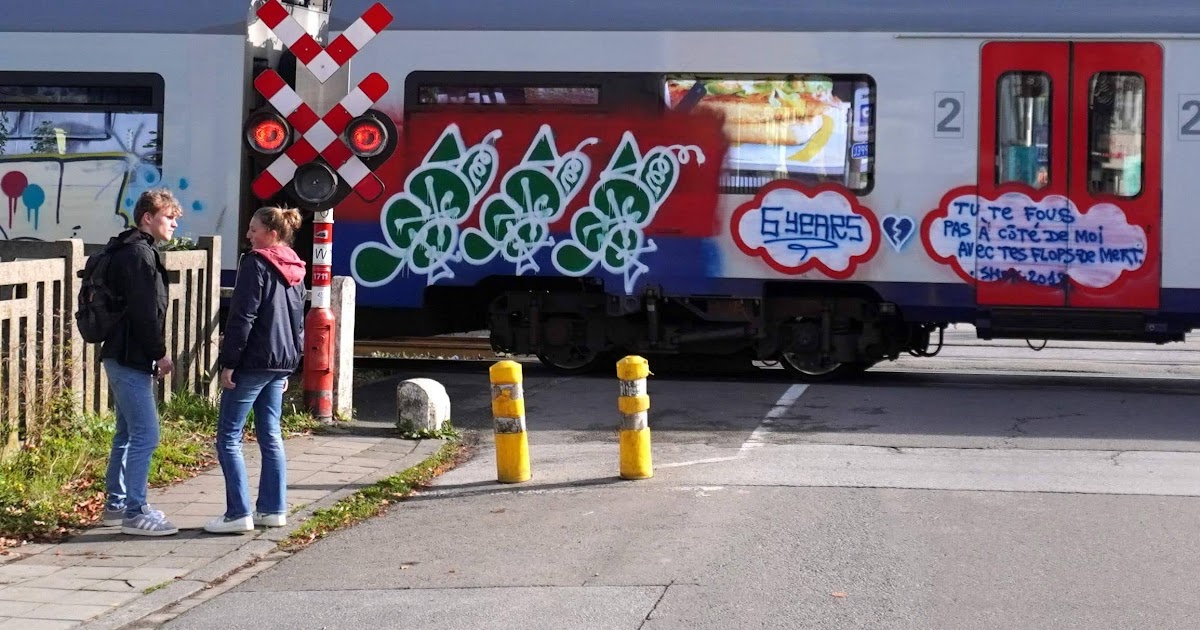Precious Lives and Precious Things
A wall lay in ruins, and Ilit Azoulay salvaged what she could. It must have been a tough choice of what to save and what to let go.
For Azoulay, trash can itself be precious, for it tells of the people who left it behind. And anything, no matter how revered and how precious, could one day soon end up in the trash. As the Jewish Museum has it, they are “Mere Things,” through January 5— and I work this together wish a past report on still life with thoughts of death by Rachael Catharine Anderson as a longer review and my latest upload.
and I work this together wish a past report on still life with thoughts of death by Rachael Catharine Anderson as a longer review and my latest upload.
Those ruins from Tel Aviv form the basis of Tree for Too One, as in (almost) “two for one” and “Tea for Two.” You can forgive Azoulay an easy pun and the old soft shoe. She puts things through a process very much like punning, which is to say art. It takes a museum wall to display them all, some on shelves and others transformed again by photographing them, before displaying the photos, too. This is both physical collage and photocollage, and it leans a magnifying class on one its pieces—to aid in looking or to put under scrutiny what she sees. Earth tones help unify the work and preserve its warmth.
Just how precious, though, is it? Azoulay is not saying, but a gasket can look like a wedding ring, and a tree (or whatever is left of it) grows right there, in a flower pot—falling to its right toward death. More objects rest in a display case a few feet away. That strangely human wish for meaning does the transforming, but so do snapshots salvaged from the site. They look all the more poignant for their bright smiles and clumsy prints, set amid a sophisticated work of photography. People, too, can become objects and images, but as testimony to lives.
This is not NIMBY—not a protest against construction in the country’s most cosmopolitan city. A pressing need for housing dates back even before the international accord that promised a state of Israel and a Palestinian state. Refugees to Israel knew all about displacement, much like art. Builders were so desperate, the museum explains, that they built walls from whatever lay at hand. And yes, that was another way of valuing and preserving trash. Azoulay need only reveal what walls once hid.
Museums go through a similar process of deciding what to value every day. No surprise then, if the rest of work since 2010 responds to museum collections. None is exactly site specific, because it is also continuing its transformations. Again and again, she seeks parallels among disparate objects, like a piper and a stone saint. A photocollage makes objects from the Jewish Museum itself take flight, as Unity Totem. Azoulay produced her most massive work while in residence at a museum in Berlin, where she lives.  As the title has it, there are Shifting Degrees of Certainty.
As the title has it, there are Shifting Degrees of Certainty.
Two more works start with photographs of objects in the Israel Museum and the Museum for Islamic Art, both in Jerusalem. No surprise there, too—not when Israel still seeks safety and Palestine its due recognition. No surprise as well if the first includes HVAC units and other museum infrastructure. That work includes a collage of human cutouts and stone, while fragments of Arab art become a magician’s robe. Once again people are the most precious object of all. As the work after the Israel Museum has it, No Thing Dies.
The curator, Shira Backer, stresses how much the artist relies on digital magic. “A pebble becomes a boulder, the handle of a ewer the scepter of a queen.” I was struck instead by the weight of images—not just the emotional weight, but the physical weight of museum objects. The eighty-five photos from Berlin have distinct shapes and separate frames, nesting together like a single precious structure. Born in Israel in 1972, she keeps returning to both her origins and Berlin. The work provides a tour of physical space as well.
Read more, now in a feature-length article on this site.
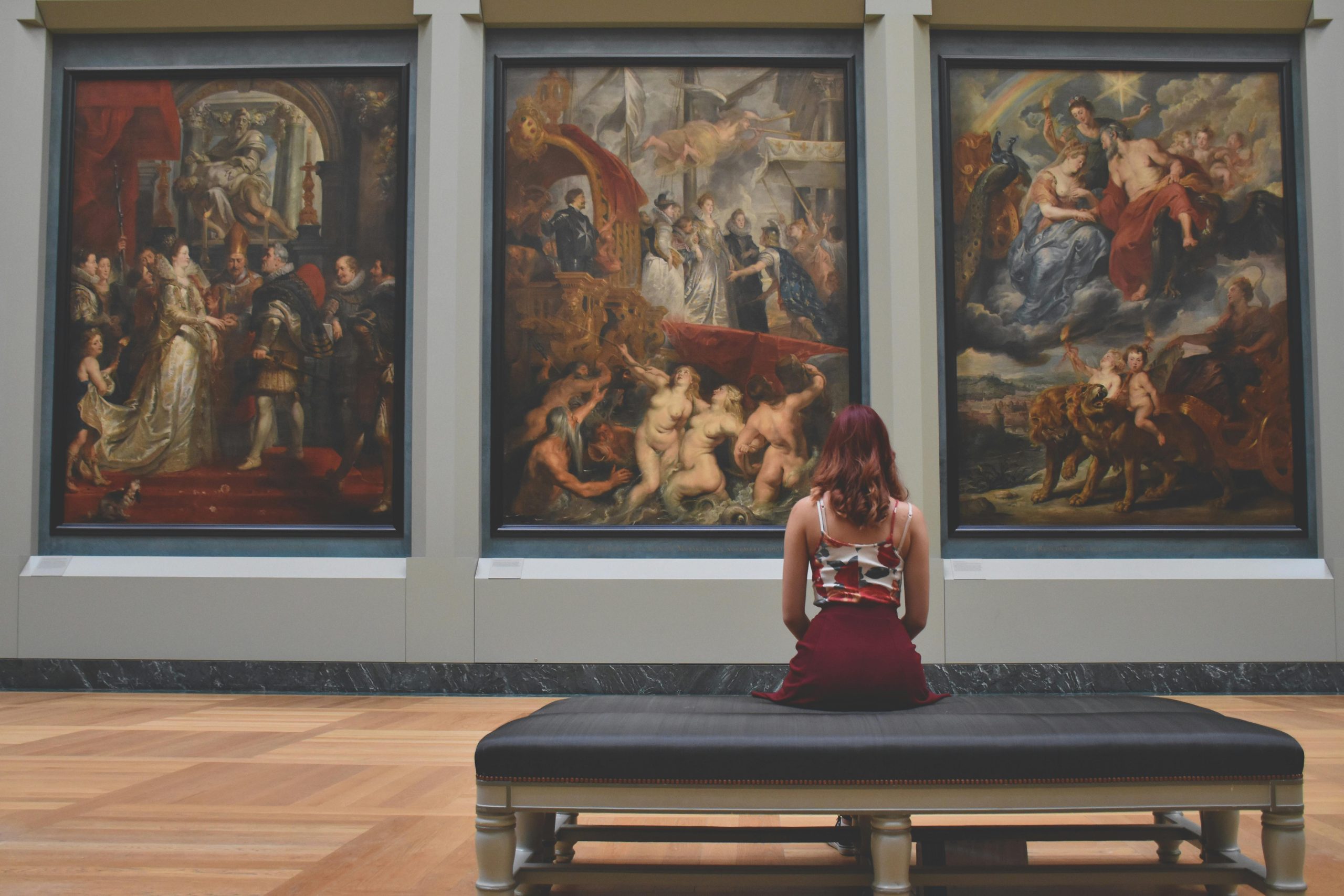
Digital Marketing Strategies for Artists – How to Sell Art Online
Thanks to the Internet and new trends, the art world has expanded beyond physical galleries. Artists can now connect with a global audience through strategic online marketing. To boost art sales, understanding and implementing effective digital strategies is crucial.
This article will show you various techniques that artists can use to enhance their online presence, engage with potential buyers, and ultimately drive sales.
Understanding Your Audience
Knowing who appreciates your art and who is likely to purchase it will inform every marketing decision you make. Create buyer personas that include demographics, interests, and purchasing behavior. Use social media analytics and website data to gather insights about your audience.
Building an Engaging Website
A professional, user-friendly website is vital for any artist aiming to boost art sales. Your website serves as a central hub for potential buyers, so it should showcase your portfolio, provide information about your art, and facilitate easy purchasing options. Here are some essential elements to include:
- High-Quality Images: Ensure that your artwork is presented in high resolution. This gives potential buyers a clear view of your art, making them more likely to purchase. In case you make lifestyle images, you could use Room Mockups by ArtPlacer.
- E-commerce Functionality: Implement an easy-to-navigate online store. Platforms like Shopify or WooCommerce can help you set this up without requiring extensive technical knowledge.
- Artist Bio and Story: Share your artistic journey. Buyers often connect more with art when they understand the artist behind it.
- Contact Information: Make it easy for potential buyers to reach you with questions or custom requests.
- Blog Section: A blog can drive traffic to your site, improving your SEO and allowing you to connect with your audience through articles about your creative process, art history, or industry trends.
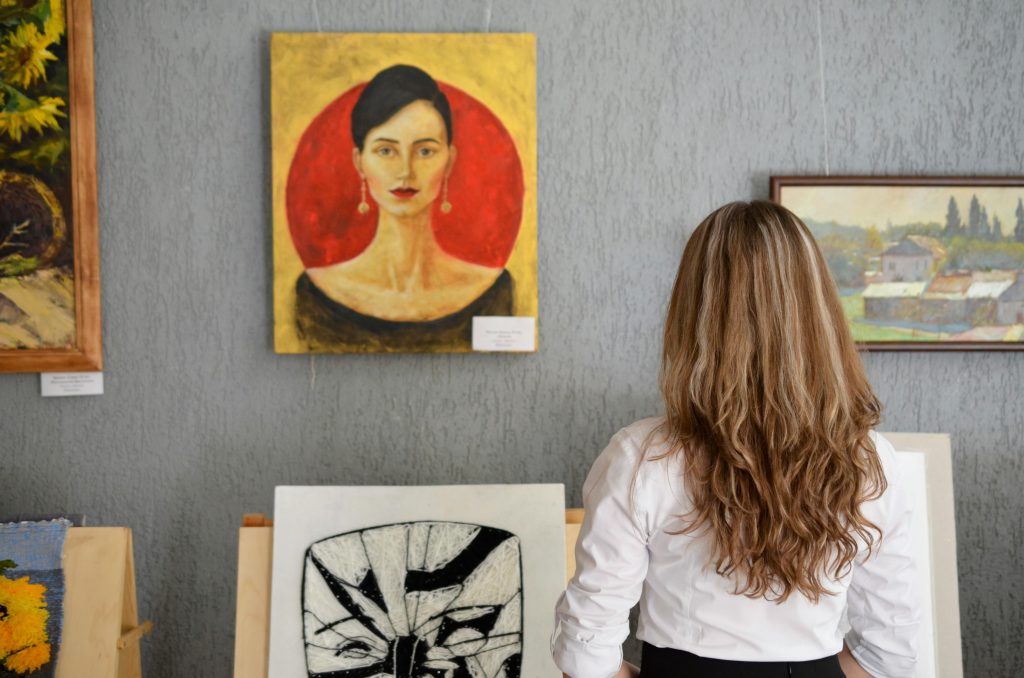
Harnessing Social Media
Social media platforms are indispensable for artists. They allow you to showcase your work, engage with followers, and promote sales. Here are some strategies to consider:
- Choose the Right Platforms: Focus on platforms where your audience is most active. Instagram and Pinterest are particularly effective for visual content, while Facebook can help you engage with local buyers.
- Create Engaging Content: Share not just finished pieces, but also behind-the-scenes looks at your creative process, works in progress, and personal stories. Engaging content can foster a connection with your audience.
- Utilize Hashtags: Using relevant hashtags can increase the visibility of your posts. Research trending hashtags within the art community and incorporate them into your social media strategy.
- Collaborate with Other Artists: Partnering with fellow artists for joint promotions or exhibitions can expand your reach and introduce you to new audiences.
- Run Paid Ads: Consider using targeted social media ads to promote specific artworks or sales events. Platforms like Facebook and Instagram offer robust advertising tools that can be tailored to your audience.
Email Marketing
Email marketing remains one of the most effective ways to communicate directly with your audience. Building a mailing list allows you to share updates, exclusive offers, and new artwork directly with interested buyers. Here’s how to leverage email marketing for artists:
- Create a Sign-Up Form: Place an email sign-up form on your website and social media profiles. Offer an incentive, such as a discount on their first purchase, to encourage sign-ups.
- Segment Your Audience: Tailor your emails to different segments of your audience. For example, send personalized messages to collectors, casual followers, or those who have previously made a purchase.
- Craft Compelling Content: Your emails should be visually appealing and informative. Include high-quality images of your artwork, share upcoming exhibitions, and provide insights into your creative process.
- Regular Updates: Send regular newsletters to keep your audience engaged. Share your latest works, upcoming events, and any special promotions you may have.
SEO and Content Marketing
Search Engine Optimization (SEO) is crucial for increasing the visibility of your website and driving organic traffic. Here are some strategies to improve your SEO:
- Keyword Research: Identify keywords related to art sales that potential buyers might use when searching online. Use tools like Google Keyword Planner to find effective keywords.
- Optimize Your Website: Include relevant keywords in your website’s content, meta descriptions, and image alt texts. This will help search engines understand what your site is about.
- Create Valuable Content: Writing blog posts that provide value to your audience can help attract visitors to your site. Topics might include art techniques, art trends, or tips for new collectors.
- Backlinking: Collaborate with art blogs or influencers to create backlinks to your site. This not only increases traffic but also enhances your site’s credibility in the eyes of search engines.
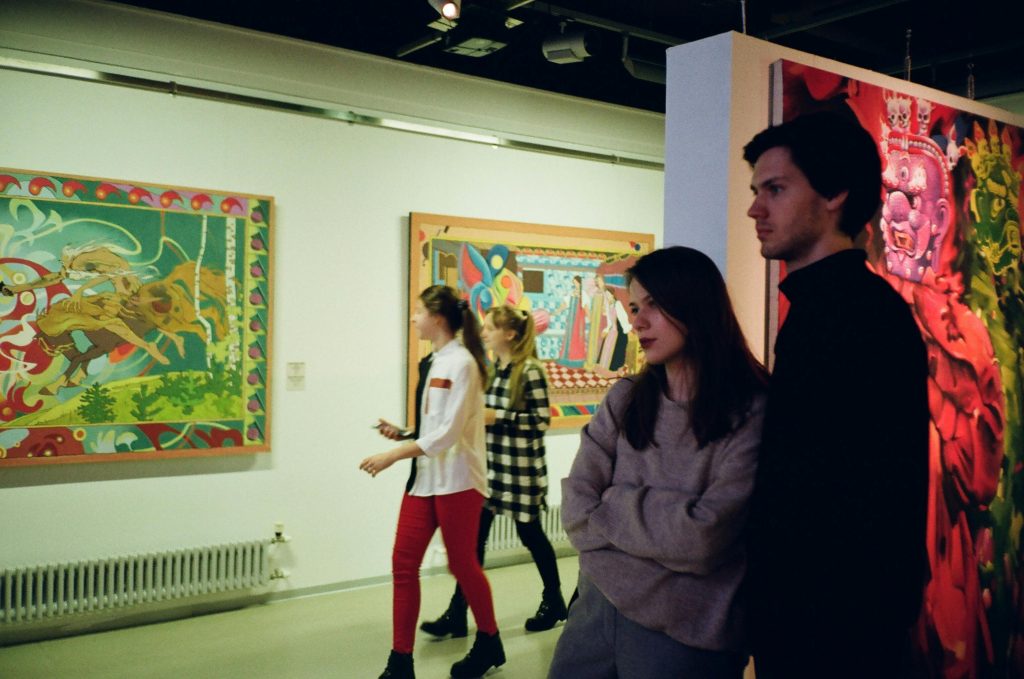
Online Art Marketplaces
In addition to promoting your own website, consider leveraging online art marketplaces to increase art sales. Websites like Etsy, Saatchi Art, and Artfinder allow artists to reach a wider audience without the need to build their own platform. These marketplaces often have built-in marketing tools and a loyal customer base looking specifically for art.
- Create Compelling Listings: When using these platforms, ensure that your listings are well-crafted with high-quality images and detailed descriptions.
- Stay Active: Regularly update your listings and engage with customers to increase visibility and sales potential.
Networking and Building Community
Building a community around your art can significantly boost your visibility and art sales. Here’s how to foster connections:
- Participate in Online Art Forums: Engage with other artists and collectors on platforms like Reddit or dedicated art forums. Sharing your expertise and participating in discussions can enhance your reputation.
- Attend Virtual Art Events: Join webinars, virtual galleries, or online art fairs. These events offer networking opportunities and can expose your work to potential buyers.
- Engage with Local Art Communities: Even in a digital world, local connections can be valuable. Collaborate with local galleries or art organizations to gain exposure.
Analyzing and Adjusting Strategies
Finally, continually analyze the effectiveness of your marketing strategies. Use tools like Google Analytics and social media insights to track visitor behavior and sales. This data can inform your decisions and help you refine your strategies over time.
These Matchbook Pups are Cheeky Representations of the Complicated Personalities of Humans

Ravi Zupa’s work is specially built to “Strike Your Fancy." Eschewing digital processes, this completely self-taught artist produces everything by hand. Using oil-based intaglio ink and a unique woodblock printing process, Zupa aims to bring together “seemingly unrelated images in search of something universal” in his “Strike Your Fancy” matchbook series.
In his first series of artful matchbooks, Zupa featured a collection of cats getting drunk at the bar. Naturally, with his latest series, the artist has taken the next step, moving from the feline to their natural frenemy, dogs. Here, Zupa presents his pups as cheeky representations of the “complicated personalities of us humans,” the self-important, the moody, the defiant in all of us.
One of the genius parts of this series are the way the artist pairs dog breeds to the human expression he aims to send up. Uses the resting faces of their demeanor and temperament to reflect the absurdity of the human species. Take the golden retriever matchbook. Zupa depicts a retriever standing with a serious look, holding a drink in one paw while sucking on a pipe hanging from its mouth. The matchbook reads,“My thoughts are so profound,” while we see the self-serious look of a golden retrieverand how it mirrors the professorial absurdity of the classic intellectual. Another favorite is the classic pug. One of the few dogs Zupa dressed in human wardrobe, we see a tan/black pug in a white-collared shirt and tweed vest. The wounded, always ready to pout and cry face of a pug is captioned with, “If I’m honest I want people to feel sorry forme.” We’ve all encountered these kinds of people in our lives, the woe is me quality we can instantly recognize. It’s true of all of Zupa’s dogs. The cheeky human insight rings true, perfectly expressed through the dogs we all know and love.

One of world’s most famous paintings now at Nelson-Atkins Museum – AOL
One of world’s most famous paintings now at Nelson-Atkins Museum AOL
Source link

‘Emilia Pérez’ | Anatomy of a Scene
Film directors walk viewers through one scene of their movies, showing the magic, motives and the mistakes from behind the camera.
Film directors walk viewers through one scene of their movies, showing the magic, motives and the mistakes from behind the camera.

Duyi Han’s immersive psychedelic installation in Shanghai is like ‘seeing the world from a higher dimension’ – Wallpaper*
Duyi Han’s immersive psychedelic installation in Shanghai is like ‘seeing the world from a higher dimension’ Wallpaper*
Source link
The big picture: Frank Auerbach in communion with his art, 1986 | Photography
The Observer’s Jane Bown took this portrait of the painter Frank Auerbach in 1986, when he was chosen to represent Britain at the Venice Biennale. Auerbach, who died last week aged 93, was already by then a figure of renowned artistic compulsion. Laurence Marks, whose interview ran alongside Bown’s portrait, marvelled at his “austere and solitary communion with his pictures”. Auerbach had arrived in Britain on a kindertransport aged seven, and after the war discovered that his parents had perished in concentration camps. Finding his vocation as an artist at 25, he had, Marks observed, subsequently “worked seven days a week, nearly every week of the year, starting at 7am and continuing until 9pm in the same studio in Mornington Crescent, painting the same handful of friends and the same half-dozen or so London scenes over and over”.
Bown’s portrait seems to capture all of that sense of Auerbach’s refusal to see any margin between life and work; his clothes and the floor and every surface of the studio have become alternative canvases. He never let up, discarding and scraping and reimagining each painting, with layer upon layer of pigment, until it resolved itself into something he could live with.
Auerbach wasn’t a fan of talking to journalists, but I met him once a decade ago for a piece in which we wandered around the Tate, looking at his beloved Turners and Constables. I asked him at one point if he ever felt like he had done enough. He suggested not – “but,” he said, “as I have got older it is just the doing of it that is the fun, and nothing beyond that matters at all”. He smiled. “I have just been so lucky to get up in the morning, every morning, and be able to do something that may at any point in the day surprise me.”

Theater festival offers solace in Burkina Faso, a nation torn by violence – VOA Asia
Theater festival offers solace in Burkina Faso, a nation torn by violence VOA Asia
Source link
The week in classical: The Tales of Hoffmann; Philharmonia/ Salonen; Berlin Philharmonic/ Petrenko – review | Classical music
One of his short stories inspired Tchaikovsky’s ballet The Nutcracker, but ETA Hoffmann – German romantic writer, polymath, rake – was also a sci-fi pioneer. He tried to build his own automata and invented tales about artificially created beings even before Mary Shelley wrote Frankenstein. The wind-up mechanical doll, Olympia, from his story The Sandman (1816), has a central role in composer Jacques Offenbach’s The Tales of Hoffmann, which has opened at the Royal Opera in a richly inventive new production conducted by Antonello Manacorda and directed by Damiano Michieletto. No gag opportunity is missed, no surprise suppressed. The whole event is a riot, done with extreme seriousness.
Offenbach died in 1880 before the work could be staged. Had he not done so, he might have left a definitive edition of his odd, lopsided but touching creation. The Royal Opera, in a co-production with Opera Australia, Opéra National de Lyon and the Teatro La Fenice, Venice, presents a new edition. For an opera staged regularly but not frequently, any changes should distract few: it manages a degree of chronological security that leaves the Italian production team – also responsible for, among others, the Royal Opera’s winning Cavalleria rusticana and Pagliacci last year – free to pursue their wildest fantasies.
And they do. Industrial quantities of glitter, a pea-green corps de ballet who dance with chairs, extreme wigs, carnival masks, a smashed cello, enchanting child ballerinas, parrot and doppelganger, stilts, tumblers, hula hoops: all – relatively – normal operatic fare. Add in the shrivelled brain, the enlarged eyeball, the mathematic equations in which integers end up as a choreographed chorus (you had to be there), and a bizarre new Hoffmannesque world emerges. In Paolo Fantin’s joyful set designs, an extravaganza of greens, pinks and crimsons, with costumes by Carla Teti, lighting by Alessandro Carletti and choreography by Chiara Vecchi, skill and imagination are boundless.
All this would be worthless without excellent soloists, chorus and orchestra to deliver Offenbach’s melodic, sprawling score. In short, the old man Hoffmann recalls his failed, youthful loves: Olympia (Olga Pudova), who is merely a doll; Antonia (Ermonela Jaho), who will die if she sings – her talent shown here through the metaphor of dance; and Giulietta (Marina Costa-Jackson), a courtesan. Pudova’s coloratura, chiselled and icy, and her stiff, clockwork gestures stole the show for dazzle, but Jaho, as ever, caught the work’s heartbreak. Costa-Jackson made the most of the less rounded character of the glamorous Giulietta.
Hoffmann himself is a curiosity, hard to comprehend but elegantly sung by Juan Diego Flórez, intonation always secure though at times his top notes lasted just a bit too lo-o-ng. His nemeses – various devil-like figures played with sinister brilliance and terrific vocal finesse by Alex Esposito – held us mesmerised. With outstanding support from Julie Boulianne, Christine Rice, Jeremy White, Alastair Miles and more, and a committed chorus required to perform unlikely complex sequences including lying on their backs and waggling their feet, this was the Royal Ballet and Opera on best form.
The orchestra delivered this long score with endless panache and attention to detail. Manacorda paced the performance well, and idiomatically, though the stop-start gaps for applause were excessive. Offenbach, after so many effervescent operettas, wanted to be taken seriously. This production honours his strange and idiosyncratic genius.
Composers of one generation can cast shadows, as well as light, on the next. Nineteenth-century romantics struggled beneath the tonnage of Beethoven. For a generation in Finland, Sibelius dominated. As the composer-conductor Esa-Pekka Salonen (b.1958), said in a recent interview: “When I was growing up. I chose to go to Italy to study, because I wanted to get somewhere far away from Sibelius – he was everywhere.” Now based in Los Angeles but back in London as conductor laureate of the Philharmonia Orchestra, Salonen acknowledges Sibelius as the greatest artist in Finnish history. Accordingly, a deep understanding shaped his reading of Sibelius’s Symphony No 1, drawing fearless, well-drilled playing from the orchestra.
The centrepiece of this all-Finnish concert, after the short, jubilant Flounce by Lotta Wennäkoski (b.1970), first heard at the Proms in 2017, was the UK premiere of Magnus Lindberg’s Viola Concerto. A friend and exact contemporary of Salonen, Lindberg more willingly embraced the influence of Sibelius, creating pieces which capture similar expanses of Nordic landscape, musical or actual. He wrote the viola concerto for Lawrence Power, one of the most imaginative exponents of the instrument, and currently a resident artist at the Southbank Centre.
The three movements flow into one another, punctuated by heady brass fanfares. Every string technique is employed by the soloist: pizzicato (plucking), quadruple stopping (bowing four strings at once), harmonics (touching the string lightly to create ghostly, ethereal high notes) and, in an extended cadenza, playing the viola as a banjo and singing along, as if searching for notes in the ether. All that, plus the long, lyrical lines so distinctive in this middle-voiced instrument, made this a compelling work, immediately worthy of a place in the repertoire as long as someone apart from Power is capable of playing it (Timothy Ridout or Tabea Zimmermann should cope).
Another world-class string player, the Norwegian Vilde Frang, made a powerful case, were one any longer needed, for Erich Korngold’s Violin Concerto, which draws on melodies from his own Hollywood film scores, causing inevitable disdain in some quarters at the time of its 1947 premiere. In a concert with the Berlin Philharmonic under the baton of the orchestra’s chief conductor, Kirill Petrenko, Frang caught the mood of bittersweet melancholy and yearning, galloping to an elfin, catch-me-if-you-can finale, exuberant horns stating the luscious main theme in the closing section. The orchestra also played Dvořák’s Symphony No 7, as if this familiar score had been taken to pieces – Petrenko is exhaustive in his analysis of every note, every bar – and reconstructed with fresh, rebellious, carefree energy.
The other work was Rachmaninov’s tone poem The Isle of the Dead, inspired by Arnold Böcklin’s spooky painting. A mysterious rocking melody builds to a ferocious climax, often likened to Charon ferrying the dead to Hades. The Berliners united in a mighty roar. The River Styx was in full spate. The return to a perfectly hushed pianissimo came as balm to the soul.
Star ratings (out of five)
The Tales of Hoffmann ★★★★
Philharmonia/Salonen ★★★★
Berlin Philharmonic/Petrenko ★★★★★

How Bennington College Saved University of the Arts’ Dance Programs After the School’s Sudden Closure
On a Friday afternoon on the last day of May, Donna Faye Burchfield was sitting on her deck in Philadelphia when a newspaper notification popped up on her friend’s phone: University of the Arts, where Burchfield had been dean of the School of Dance since 2010, was closing its doors in a week—for good. Were Burchfield and her colleagues given any warning? “Of course not,” she says with a laugh, still incredulous months after the fact. “And we had 31 students scheduled to leave for France in less than two weeks for the low-residency MFA program.”
Burchfield spent the rest of the night pacing her apartment, trying to process the shock. The next morning, she started making phone calls, relying on friends and colleagues in the field to help her compile a list of contacts who might be able to help. “I didn’t even know what I was going to ask for,” she remembers. “It was like being lost at sea. I needed to figure how to get to land.”
Eventually, Burchfield was connected to Bennington College president Laura Walker and provost Maurice Hall, and described her most immediate concern: that the 13 UArts low-residency MFA students expected to graduate at the end of the summer—many of whom had already accepted job offers predicated on earning their degrees—would be able to do so. “I explained that,” says Burchfield, “and Laura said, ‘Don’t stop there. How else can Bennington help? What else do you need?’ ”
Just two months later, thanks to Walker’s heroic fundraising efforts and the generosity of three major donors, The New York Times announced that the UArts School of Dance would be revived at Bennington College. In September, 36 BFA students, 20 continuing low-residency MFA students, and 13 faculty members matriculated to Bennington, trading UArts’ urban Philadelphia setting for Bennington’s pastoral Vermont campus.
While the partnership might seem unexpected, both Burchfield and Walker see it as a serendipitous continuation of Bennington’s modern dance legacy. In 1934, a group of artists including Martha Graham, Doris Humphrey, Hanya Holm, and Charles Weidman helped to launch the Bennington School of Dance, a summer festival that acted as both a training program and a creative laboratory. In the decades since, dance has continued to play an important role at the college, with notable teachers including José Limón, Judith Dunn, and Steve Paxton.


“There’s a direct line from our founding dance faculty to what we’re doing now,” says Walker. “Bennington was the first college to put the arts at the center of the curriculum, and that still informs everything we do.” Other Philadelphia-based schools, like Temple University and Drexel University, offered to absorb UArts students and faculty. But Burchfield understood that what made UArts’ dance program special was more than just its people. “We were looking for a place where we could hold on to the ways that we’ve taught students,” she says. “There was already a history of experimental pedagogy in place at Bennington.”
A new program, made up of former UArts students and faculty, now exists alongside Bennington’s BA in dance. While the BFA is more geared towards preparing dancers for performance careers and the BA is primarily focused on choreography, interdisciplinary research, and critical inquiry, students are free to take classes across both tracks. Outside of their BFA classes—which will be taught by many former UArts professors (including Shayla-Vie Jenkins and Jesse Zaritt, who will act as faculty advisors), mostly in a rotating group who will visit Bennington to teach in three- and seven-week stints—the transfer students will be fully integrated into life at Bennington, living in campus housing and choosing their own BA courses. UArts’ low-residency MFA students will go to Bennington’s campus over the college’s fall and spring breaks, and then spend six weeks over the summer in Montpellier, France, just as they did before the merger.
While Walker and Burchfield hope that the UArts transplants feel settled in Vermont this year, they’re still hoping to find a satellite space in Philadelphia where the BFA program can build a home. “Philadelphia has such a rich cultural life,” says Walker. “I’m really excited about having an outpost in the city that all of Bennington College can use.”
Before the start of the academic year, Burchfield and her team laid down a support floor in Bennington’s student union, transforming it into a studio for the BFA students. “It was like this space was waiting for the floor to be laid. All those folks and all that labor, it still lives here,” says Burchfield, referencing Bennington’s dance history. But it’s Burchfield and Walker’s steadfast belief in arts education that’s allowing that legacy to continue to grow. As of press time, dance is the only one of UArts’ schools to find a way forward for a large group of students and faculty.
Walker hopes that this collaboration can serve as a blueprint for other programs suffering in the future. “As the arts are under attack, we need to find new models to ensure that programs like this, that are extraordinary, will continue,” she says. To that end, Burchfield has hung a quote by Merce Cunningham dancer Viola Farber—another member of Bennington’s storied dance faculty—on the door of her new office. It reads: “I think somehow all of us who work at dancing inspire one another; whether we have anything specifically to do with each other or not.”

Japanese Architecture Meets Champagne at Maison Ruinart
Like champagne itself, the revitalized Maison Ruinart in Reims, France emanates a sense of lightness and effervescence. After two years of meticulous restoration, this historic address, deeply rooted in the winemaking tradition of Champagne, has been reborn with a fresh, modern vision – one that captures the very essence of champagne through architecture, design, and landscape. Led by a renowned team consisting of Japanese architect Sou Fujimoto, landscape designer Christophe Gautrand, and interior architect Gwenaël Nicolas, the collaborative design includes a new pavilion of stone and glass, nestled within a public sculpture garden that champions local biodiversity.
Fujimoto’s design draws inspiration from the lightness of champagne bubbles, forming an airy, asymmetrical structure with sweeping curves that echo the roundness of a champagne glass. Fujimoto goes on to say, “Through the pavilion’s bay window, facing the main courtyard, you see Maison Ruinart as if in a dream.” The pavilion’s transparent wall opens to the main courtyard, allowing visitors to view both the historic surroundings and the landscape beyond in one fluid scene. Inside, visitors experience a blend of light and shadow, moving through connected spaces that reflect the limestone-rich landscape of the region. With its winding paths and expansive glass, the pavilion offers a sensory journey that emphasizes the subtle beauty of nature.
The interiors blend textures and hues in a nod to Ruinart’s chardonnay vineyards, with details like green-toned upholstery and oak and beech furnishings that evoke petal-like forms. Floating glass bubbles by Atelier Barrois decorate the bar, adding to the dreamlike atmosphere. An intimate cellar beneath the pavilion offers a secluded tasting experience for enthusiasts, featuring Ruinart’s rarest vintages. “I wanted to strike the right balance between the history of an ageold Maison and a more contemporary perspective. Visitors are invited to plunge into the world of Ruinart, feeling both guided and free to explore as they please,” says interior architect Gwenaël Nicolas.
The restored site not only honors the heritage of Maison Ruinart but serves as a place for modern dialogue, welcoming artisans, artists, chefs, and visitors to engage in a shared celebration of culture, history, and the art of champagne.
Photography by Raul Cabrera.
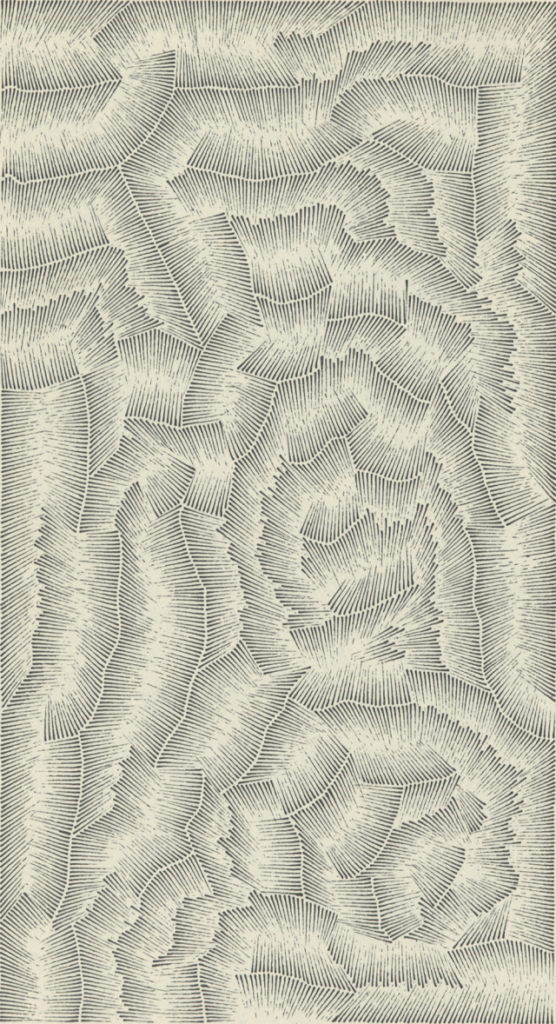
The Paris Review – Dreaming Within the Text: Notebooks on Herman Melville
From Six Drawings by Robert Horvitz, a portfolio published by The Paris Review in 1978.
The following entries came from notebooks the writer and psychoanalyst Christopher Bollas kept between 1974 and 1977. These notebooks were not written or edited for publication–Bollas says they were more like “mental scratch pads where the author simply writes out what he is thinking in the moment without, ironically, thinking about it.” The entries touch on things Bollas was reading at the time, scenes he saw in London, what he was observing in patients–and, more often than not, the ways these all intersected in his thoughts. We selected these entries in part because they cover a period of time when he was reading and thinking on and off about the work of Herman Melville, alongside many other questions about character, the self, and others.
Undated entry, 1974
Let us imagine that all neuroses and psychoses are the self’s way of speaking the unspeakable. The task of analysis is to provide an ambience in which the neurotic or characterological speech can be spoken to the analyst and understood. It is not so much [a question of] what are the epistemologies of each disorder but what does psychoanalytical treatment tell us about them? We must conclude that it tells us that all conflict is flight from the object and that analysis restores the structure of a relation so that the patient can engage in a dialogue with the object.
The style of the obsessive-compulsive, for example, is in the nature of a closed cognitive and active world. If obsessive-compulsive behavior is memory, what is being recalled? It seems to me that obsessive-compulsive behavior is a mimetic caricature of rigid mothering. It is caricatured self-mothering which [may] recall [interpret] the mother’s handling of the child.
How else can we account for the shifts in disorders if we don’t take into account the paradigms which generate them? Insofar as we know that patterns of mothering vary historically, can’t we assume that each disorder remembers the primary object relation? Indeed, why else does psychoanalysis go back to childhood when presented with conflict? Because it is understood by most to be functionally derivative of infancy.
The only problem is that the philosophical assumptions of this hypothesis remain unappreciated, to wit, all disorders speak the individual’s past and they ultimately speak the subject’s interpretation of the past and therefore are a form of remembering. The advantage of this to the person is to value his disorder as a statement, not simply a dysfunction. This is the difference between the hermeneutic and functional traditions of psychoanalysis.
A symptom is a way of thinking. Remembering is a way of thinking. Symptoms are some form of the subject’s thinking about himself. Psychoanalysis is a way of two people thinking together about one person’s thinking.
A patient brings a mood, thought, confusion, a blank—collages of himself—and the analyst provides the space. The therapeutic alliance is simply: we are thinking and working together. The transference and countertransference: we are feeling for each other together.
Undated, 1974
“American literature”
American writers speak the true self, while the country doesn’t listen. Melville tries to identify with this American false self—the external explorer and conqueror—but fails and the true self breaks through.
Undated, 1974
“Ahab”
What is absolutely essential is to keep in mind that Moby Dick is an invention, a projected object. The horrid irony of Ahab’s effort to break through the “pasteboard mask” is that he is the object behind the mask! He is the originating subjectivity. Does Melville make this irony specific?
The five phantoms loosed in chapter 47 are the loosening of Ahab’s internal objects: or the objectivization of internal selves. Rage permits the dissociations to be loosed though never integrated. Rage—especially in the search for the whale—is a loosening of or an exorcism of internal objects. The whole point of the trip is to exorcise the phantoms and to put them into the whale.
Undated, 1975
It is one of the ironies of existence that you can love the other only after you have lost the other. With ego development the fusion with the other is lost, a necessary precondition for recognizing the other’s separateness, but nonetheless a losing of one’s [fused] self.
Undated, 1975
“Melville’s ethics”
At a time when the other is sought outside, as a deity, an idea, or history, Melville’s hero points toward the struggle to find other as the unconscious self. In a sense as man has destroyed culture (collective dream/play space) he then assumes the responsibility of it and comes to a point of wisdom: culture always reflected him; he created it, it came from him. The sacred, profane, shared, etc., all experienced as outside; Melville says we must experience an inside other.
Thus he has in Mardi and in Moby-Dick a transitional metaphysical and psychical moment between other as outside (the whale) while Melville gently proves it to be inside the self. It is important to see this as Melville’s ethic. Outside, there is neither solution nor absolution; nor is either ever possible. Insight, the seeing into the self, to witness and behold the other as inside is the shock of re-cognition that Melville asks of us. It is the venue of the psychoanalyst as well, but the psychoanalyst after Freud’s metapsychological works processed the other and ethically disowned it.
Free association, which was a way of access, against the resistance of man, became a means of disowning the other by processing it. A novelist like Melville searches inside himself, comes to the point of seeing and holds the fundamental fact of the internal other.
December 10, 1975
“On good interpretation as poetry”
It is the form of an interpretation that is most effective. We must know that our best interpretations are poetic in their structure and delivery, so that the form holds words in such a way as to deeply affect the patient. In the same way, poetry rather than prose gets to us in a deeper way.
January 22, 1976
Out of the debris of our dying culture (early twentieth century) comes a new mythology and a new language. We see this early in Baudelaire who finds the symbolic inside the city; we discover it in Barthes (Mythologies) who creates a new mythology. It is godless. It is ordinary. As Barrett points out in Irrational Man, cubism is the ontologizing of the banal object, because out of the debris only objects are left.
The psychoanalytical experience is, in free association, the use of the ordinary (i.e., trivial language) to remythologize the person, to find his myth, his culture, through the debris. From the debris of his own words, which up till now he has found barren, a wasteland, he discovers meaning and then his own myth.
The analyst is the person, par excellence, who carries the person through the wasteland of the self, and who holds.
Where has the debris come from?
From an explosion in the nineteenth century of human value and belief. We are commodities, objects-to-ourselves, defined by use or function.
The death of culture. Debris. Playing with debris (Dadaism). Creating a new language.
The analytic process: death of the old self; debris and the sense of dislocation; playing with the debris; searching in anger, despair; through reflection, finding one’s self.
Barrett says that before man is a being, he is a “being-in” (111): taking Heidegger’s point about Being in the World. In modern man this Being in, or the essence of our being, has been lost. It can be re-found in psychoanalysis.
In Coleridge’s “Dejection: An Ode” and in Marx’s Economic and Philosophical Manuscripts we see man expressing his sense of loss of being-in the actual world. We have seen this earlier with Pascal, though in his situation it was as much the losing of a spiritual world: being in a world of spirit. Being-in spiritually (mythically) and Being-in actually (materially) have been severed. It is this loss which writes the “Wasteland” and founds existentialism.
Out of this comes man and world as debris, cut up in Dada and Joyce, and now a new myth of man emerges. What is the new man?
The silence of the patient comes after despair over the word. They have said, perhaps, a great deal, but begin to have a feeling of despair over the word. This despair sponsors a silence; it is silence in the face of the unthinkable; the absence in the core of a person over a truly spontaneous sense of being-in the world. Their speech has been a narrative account, a construction, often beautifully or bravely rendered.
The patient of today can speak only for so long. Speech is an effort. It is an attempt to hold off the void. (Pascal.) The silence denotes emptiness and the absence of the other. The analyst must be absence coming eventually into presence through holding.
We focus on the mother as the cause, but in fact, she is all that is left of one who gives meaning, breathes life into the other, and so we focus on her. She can never make up for the void in the culture. Our search into this relation, solely, is a misdirected one.
Character and creation. Our being does have voice through character. To hear it is a task, painful, awful. It is the voice of our emptiness yet through the transference—the analytic paradigm—our character changes.
In Moby-Dick the myth explodes (capitalism, Protestantism). We are left with Bartleby, mute among the debris—dead letters. The Confidence-Man remythologizes by manipulating the ordinary into the fantastic. He picks up debris and maps the fantastic.
After 1914 man learns, according to William Barrett, that the solitude of being a self is irreducible regardless of how completely we seem to be part of a social milieu. Man is no longer contained in a social fabric. But with our patients the tragedy is that each must fashion a life out of a wasteland.
In the sixties, politics, group movements, the therapies, communes, etc., were all attempts to fashion cultures. The Beatniks (Kerouac, etc.) were the first.
It is silly to say “counterculture” as there was no culture there in the first place.
Each of us carries within our own debris. It is our past: a past not held within a familial, social, and cultural container to be given recurrently back to us. We don’t know our past. We only have images, memories, pictures etc. We bring this flotsam to the analyst who gathers the pieces; he gives form to our content—if we can trust him to do this—we find our past. This is the analyst as the transformational object: the one who gives form to our content and thereby transforms the content itself, by giving it meaning.
Out of the debris of our past emerges our own mythology. Why have I been so moved when on one bright day I witnessed from a 10,000-ft. peak of the Sierra Madre a tiny train thousands of feet below crossing the California desert? Why should this experience be so close to me, seem to hold me? It was a question, in fact, that I had never asked at the time. Its essence evaporated into the diversions of my life, though now and then I recovered it.
In analysis I found two things about myself. One was that, as my father had gone off to war when I was three months I did not see him until I was nearly two. I was overly eager not to see my mother disappear as well. At nursery school, it was my fate to stand up high on the steps of the slide—not to go down—in order to watch in the distance for the first sight of my mother who would come to collect me.
So being up high and searching for something vital and joyful was part of my personal idiom: the creation of my myth of significance and order.
The other mythical object was the train, which has always filled me with sadness and, strangely, contentment at the same time. So it was in my analysis that I discovered that it was by train that I left my birthplace and my father and also it was to the train station that every day my grandfather took me to see the train go by. Perhaps he did it out of his own love of trains or perhaps it was because I indicated my desire to see trains and he, in kindness, facilitated this wish. What the myth of trains gave to me in analysis, with the understanding of the essence of the aesthetic experience on the mountaintop, was how an experience visualised for me a deep myth: searching for recovery from my mother, longing to be reunited with my father. The experience of looking on the mountaintop was me.
May 9, 1976
“Metaphysical psychology”
Is it the eventual affirmation of the negative? Is Moby-Dick an affirmation of brotherhood, through the destruction of isolated fanaticisms? Ishmael lives to share a narrative with others, unifying men through discourse, while Ahab uses men to fulfill the fantastic demands of his private culture.
November 4, 1976
“On a character serving in a restaurant”
I am watching a young woman who is the waitress (wife) in an artificially lit Italian café that serves sandwiches to the English. The surroundings are without character, rather like the set of a television film, suggesting its impermanence. There is little here, except the come and go. The first time I ate here, she paid me no attention—flung the food on the table. Yet, tonight, I have discovered her use of herself as a character. She dissociates from the surroundings, defying the anomie by being a character. She throws her hands through her hair, punches out the orders, laughs or teases the locals—yet she is totally self contained. I find this interesting as I am reminded of Marx’s theory of alienation. She deals with it all by laboring her character: it becomes the surrounding of the self, and she looks no further.
Undated, 1977
“The text dreaming”
The text would have to undergo an experience of its own dream. Like the dreamer, the text would have to be confused. It is not simply the author who has the dream as the dream elements are already in the text at hand. With Stubb’s dream I must see what holds up to the dream and then what occurs after the dream.
The point is to establish the composition of the dream space, in literature or in life. It is an area of
1. Wonder or terror
2. Actualization
3. Enigmatic meaning
4. The place where the thinker is the thought of himself, or, the thinker the participant in the thought
The dream in literature must be a region of wonder, separate from yet reflexive to the rest of the text. It must be the dream’s text, as it must use and pit itself against the text, in order for us to consider it as a dream. A space in relation to the context of events in the fiction. Is it an allegory within an allegory?
What is the difference between a vision and a dream?
I am concerned with a text which has a dream, a moment when the continuity of its presence of mind is interrupted by a dissociation in its consciousness, in a space that I have called the dream space. The text can have its own dream if at this moment the cumulative experience of imagery-making, of plot construction, of characterization, breaks down into a self-reflexive dream process. This is rather like a breakdown, but a breakdown of a very special kind. In such moments the author yields, under the demand of the text’s unconscious logic, to the text’s (and his) need to share a dream with each other. (So, the author shares a dream with his text!) We could say that this moment will be more available in the modern novel, where the author already has found an intimacy of rapport with the text, where he uses more the idioms of his own internal psychic structures than the conventions of literary creativity. Even so, few authors—as Poulet insists—achieve a level of sincerity toward their own text. I should say, an intimacy where the text is the container of unintegrated subjectivity, and where the author’s Other is not an alienated moi, but a subjective object.
To the person writing or dreaming, writing (or textualization) and dreaming are processes of thinking about being, not products. We must, as E. Said argues, reacquaint ourselves with writing as a process, not a finished product.
This can also happen because an author, like Melville, needs to dream within the text; though the experience of the dream will be in the textual space, will use the history of the text for the dream material, and, as such, will be the text’s dream. If an author, like Melville, yields himself to the text, then we can say that the text will dream him, or dream about him.
April 26, 1977
“Melville”
The core fantasy seems to be of a desire for an object to be plundered. In Moby-Dick this was the whale, but this leads to annihilation. In “Bartleby” there is a desire for the experience to be provided by the other (the employer), with a dead ending in the brick-wall prison. In “I and My Chimney” there is an attachment to the object as inanimate and under the fantasy control of the self.
What can we call this cluster? It is a private phantasy: an autistic phantasy that materializes within the fiction, but isn’t made explicit as such. In “Bartleby” it is addressed to the other. In Pierre what do we make of the episode when the character crawls under the rock, to be born again? Is that another cluster? Is the fictional space a place where Melville can have this phantasy? An autistic voice?
May 2, 1977
“Melville”
Literary perversion.
Idiot event.
Burlesque.
Are there certain fantasies of the text that are not thoughts per se but ritual enactments of ego structures? Deep memories, paradigms, of the subject’s experience of the other?
Is an allegorical personification a character? Insofar as this structure speaks structurally, it is.
The idiomatic arrangement of character structures is the voice of character: the interpretation of self.
Does character speak in fiction more uniquely as the other becomes a phantom (death of God) eliciting a mute yell from the subject—as the voice of character? All character is utterance to an absent other, and with the death of God, this absence provokes deep language cries.
In some characterizations—especially sagas—we must ask, What is left out? The character may be noble, set against a surrounding world that is very violent. This is the split-off voice of character, which in the nineteenth century is joined to the self. Character defends the self against the internal world.
How does character relate—i.e., to us, the objects around it? Such use, does it reveal idioms?
The absence of a specific character language, particularly the person who seems to be strong and induces our projective identifications, creates a dream space for us. Character is the container of the reading subject’s pure self. We are Other.
May 3, 1977
“Character in fiction”
Does character in fiction depend on what the hero deals with or transforms? Where are the events of being? Character has to do with the idiom of transformation: an interpretation of the self. Where is the locus of transformation in fiction: in the author, or, is it yielded over to character?
What is the relation of character to the author’s use of character?
Character in fiction is a type of speech which may or may not occur in fiction. It is an interpretation of the self. If it is only a rhetorical device, it will only be interpreting the self as a rhetorical act. However, if the self experiences an internal world and relating, then character speech may occur as a reading of that self.
Rhetorical versus psychological character.
How do we experience the character in fiction? Or, how do others [other characters in a novel] experience the character in fiction? He is set up in others and in the reader. Is the text, the Other for the character? Does it reply to him or hold him?
Does character reflect the mental process of the text? Is character an interpretation of being inside the text? Where text is the psychical process, does character interpret this?
Undated, 1977
“Character”
Character in a text expresses something. Invariably, it is the discourse of structure, of handling by a self, and is a different hermeneutic. A character may say “I love you” but the formality of his being may say “Only at a safe distance do I love you.” This speech is the discourse of character and is a subjective interpretation of the self rather than the professed themes uttered by the subject. Think of Heidegger’s notion of the existence-structure of the self. Ishmael and Ahab transform the subject “I will hunt the whale” in different ways. Their style of handling is an interpretation of the self. It will speak fundamental paradigms of transformation of need, desire, fear, etc., of instincts and relating to the object. When an author releases different characters into fiction he is releasing varying ego structures in himself, different selves, to personify aesthetics of being.
“The Aesthetics of Being: Character as Discourse on the Self.”
We cannot decenter character from the crucial reality that there is an interpretive presence in character. The structures of character are idiomatic internalisations of self-object (and self as instinctual presence as object) relations. These are matters of choice. Ishmael and Ahab make choices derived from their different ego structures.
By releasing character the author uses different styles of transformation of desire and relating to the other.
In fiction, each character embodies a character memory.
Does any of it have to do with the experience of the text? In the sense that an author may release his internal world into the text, characters are different modes (ego structures) of handling and interpreting these themes. This handling (transformation) is the aesthetic of character.
Ego structure. The infant experiences the mother. On the basis of the infant’s experience of the mother he makes choices about handling the mother.
In Moby-Dick Melville puts one ill and one healthy ego structure alongside one another, in the juxtaposition of Ahab and Ishmael.
The mother’s handling of her infant is an aesthetic and points the way to her notion of the baby’s body and self. Her handling complements the baby’s emergent ego (handling) functions. As the mother handles instinct and impulse, so the baby internalizes her paradigms. This is the internalization of an interpretation of the self.
Undated, 1977
“Metaphor as secret”
Metaphor takes a word which applies to one thing and transfers it to another because it seems a natural transfer. This occurs in Melville’s pyramid fantasies where clusters of metaphor sequester hidden meanings. The chimney has hidden spaces and is a metaphor of secret places. Such an act is at the root of fiction. Keeping the source a secret, yet communicating from it. Is it some deep ego structure that finds symbolic equations for itself?
Undated, 1977
“Character versus subjectivity”
Character is memory. It is an aesthetic of being that forms and transforms experience according to an unconscious hermeneutic. It is mute in the sense that the receiver is absent (except in analysis) and the subject who enacts his character is blind and deaf to his aesthetic.
In a sense, character reserves an interpretation of being that may be at variance with the person’s subjective notion of their essence. It is a clash between the discourse of character—which speaks through the aesthetic of being—and the voice of desire: the subject’s play of the imaginative possibilities of self.
This is, perhaps, best illustrated in a person who is (as existent-structure) a certain way. He handles himself and others in a certain style. A syntax of being and relating. Now, all this may be unknown by the subject and, indeed, at wild variance with his own “internal world” or, at least, his experience of the world.
It raises the question: What is subjectivity? Or, can there be a genuine subjectivity without hearing from the discourse of character? I think the discourse of character is a mute speech. It means “listening” to one’s silent speech, almost as if we bear with us a shadow self who prints in an aesthetics of being a dialogue with an absent object. In psychoanalysis, this absent object may reappear in the transference.
In fiction, at least the modern novel, character may exist alongside consciousness; in particular, the consciousness of the author … or the world of the novel. What is the discourse of the self? Does the consciousness of the author grapple with the violence of character; or, is it remedied by superficial placing in indexical tongues (sociological matrices) rather than as an idiomatic—unconscious—discourse of the ego: the impersonal self?
What novels do I know of where the subject grapples with character? Moby-Dick, Crime and Punishment. It means a conscious confrontation with the mute determinacy of one’s idiomatic discourse. Character is autistic, in that the receiver of the discourse is absent (the object of all characterological defenses) and the language is, thereby, a dead language. It is the fact that character is a dead language—a language no longer spoken between the original speakers—that gives critics the sense that character is conservative, or inhibiting.
Most novelists understand only the effect of character—that is, linking it with mute determinacy—and this principle is then reprinted in a novel, in social terms (cf. Goffman), but that is not the truth of character, which is deeply enigmatic and aggravating.
Many novels are an attempt to escape the enigma of character by a manic-omnipotent staging of character, giving to themselves a control over character—“characterization”—that is a denial of the very experiences of one’s character.
Recent psychoanalytical studies of the self—in particular, the borderline and narcissistic—are concerned really with a patient whose primary speech is character, whose “subjective” life is blank or chaotic and who refuses to be informed as a subject, of themselves as a character.
Character is destiny if understood, and fate if not understood.
Few authors permit this determinacy to be with them. Their act of omnipotent creation defies destiny. Yet some writers do: Melville, Shakespeare.
December 15, 1977
“Denial and paranoia”
A patient denies memory and both severs and dissolves linking, so he has no internal, accrued sense of self. He has no tradition upon which he can rest. His unconscious motivation is to deny the absence of a transformational object and to reject what is, to use the semiology of the self as a reproach to the other, who must feel guilt.
But, the attack on linking leaves him without structured psychological means of living-in-the-world. To survive, he uses paranoid vigilance—to scan the environment—instead of psychic insight, to know the self. Hence, paranoid thinking is a defense against anxiety surrounding survival of the self, that occurs when there has been an unconscious subversion of psychological insight. That is why he is not concerned with knowing himself or with insight, but only with how I feel about him and whether he is in trouble or not.
Christopher Bollas is a psychoanalyst and writer whose books include The Shadow of the Object, Cracking Up, and Meaning and Melancholia, among others. This extract is adapted from Streams of Consciousness: Notebooks, 1974-1990, which will be published by Karnac Books in England in October.
